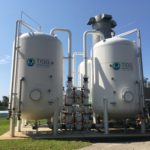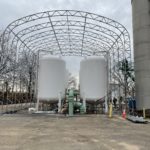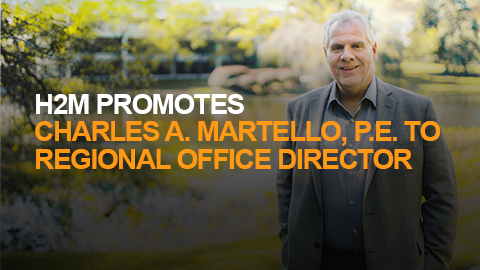Per- and Polyfluoroalkyl Substances (PFAS) are a group of man-made chemicals that include PFOA, PFOS, Gen X, and many other chemicals. PFAS can be found in many products and materials and cause a wide range of health problems – with studies showing links to cancer and endocrine disruption. With the advancement in analytical capabilities, extremely low concentrations have been encountered in some drinking water supplies.
In February 2020, the Environmental Protection Agency (EPA) announced it would begin regulating PFOA and PFOS under the PFAS Action Plan. The Plan will address PFAS in drinking water; reduce PFAS exposure through clean ups; ensure safety and understanding of PFAS in commerce; take action under the Toxics Release Inventory (TRI) and Toxic Substances Control Act (TSCA); and increase research to reduce risks, risk communication, and engagement. While the EPA works to regulate PFAS, several States have decided that they will not wait and have either already passed or plan to pass PFAS regulations with maximum contaminant levels. Additionally, several other States are already regulating PFAS with health based guidance levels. H2M architects + engineers (H2M) is continuing to monitor new State regulations and maximum contaminant levels such that they can provide assistance where needed.
H2M has actively investigated several treatment technology options and designed, permitted, and installed public water supply treatment facilities in full compliance with State PFAS drinking water regulations.
Recently, the Water Authority of Western Nassau County had H2M address their treatment of PFAS at Station No. 44. In March of 2019, four drinking water supply wells at the station in Elmont, NY, totaling 6.6 million gallons per day of production capacity, were found to have higher detections of PFOA and PFOS than the maximum contaminant levels being considered by New York State in a proposed PFAS regulation. Station No. 44 accounts for nearly one quarter of the Water Authority’s annual water production. The Water Authority wanted to proactively implement emergency treatment to avoid losing use of the critical site prior to finalization of the maximum contaminant levels in August 2020.
H2M immediately began assisting the Water Authority with emergency planning and budgeting for the project. H2M updated the Water Authority’s master plan and conducted a review to re-prioritize capital projects to find funding for this emergency. Additionally, H2M applied for and was successful in obtaining emerging contaminant grant funding for the Water Authority from New York State to offset the cost of the project.
In July 2019, the Water Authority authorized H2M to implement the emergency treatment plan. H2M designed the emergency treatment system consisting of eight 40,000 pound granular activated carbon (GAC) vessels dedicated to each set of two wells to treat the raw well water and remove PFOA and PFOS contamination. During the design, H2M coordinated the procurement of the long lead GAC vessels such that upon completion of detailed design, the treatment equipment would be ready for installation by the contractor. They also designed the new installation in such a way that this critical water supply station could remain operational until the new equipment was installed and approved for use by the State and local health departments. Temporary fabric tent enclosures were provided for the vessels so the Water Authority could continue supplying water from Station No. 44 throughout the winter months without the risk of freezing.
In addition to the design and construction support services, they proactively engaged New York State and local health departments early and communicated the emergency action the Water Authority was taking. By partnering with the regulators in the early stages of design they were able to work out a review, inspection, and approval framework that would be safe and satisfactory for the local and State health departments while expediting construction. H2M completed a design, regulatory review and construction process that would normally take 18 months to two years to complete in just 10 months. The Water Authority is now in full compliance with the new State drinking water regulation for PFOA and PFOS.
One of the lead engineers that worked on this project was Max Grabinski, E.I.T., who has been with H2M for four years. Max is also a recent graduate of H2M’s Business Practice 101 program. This internal program is designed to introduce participants to the tools, skills, and culture of project management within the organization.
Click to expand photos:







